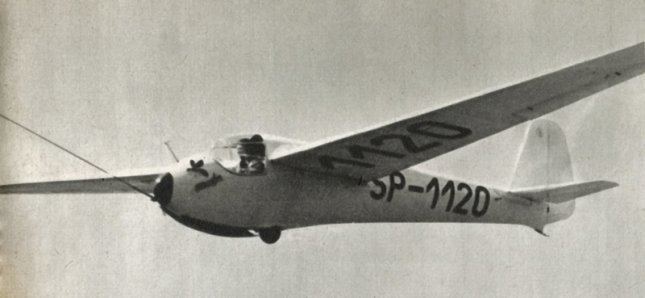Top speed 225 km/h Length 6.8 m | Wingspan 15 m First flight April 24, 1948 | |
 | ||
The IS-2 Mucha (Instytut Szybownictwa – gliding institute) was a single-seat training glider designed and built in Poland starting in 1947.
Contents
Development
The IS-2 Mucha (Mucha – Fly) was designed to provide an intermediate solo trainer for the revived Polish gliding movement after World War II, along with the IS-1 Sęp advanced soaring and competition aircraft, IS-3 ABC primary trainer and IS-A Salamandra basic trainer. The Mucha and its developments gave the majority of Polish pilots the experience they required to get the best out of their gliders.
Construction was all-wood with plywood skinning for loaded areas and fabric covering for lightly loaded areas such as control surfaces and the wings aft of the main spars. The undercarriage consisted of a semi-recessed mainwheel and small skids under the nose and tail. The cockpit, covered by a built-up plexi-glas canopy was directly forward of the wing leading edge. Control surfaces were of standard wood and fabric construction with the ailerons fitted with external mass balances.
The first flight of the first prototype, (SP-561), took place at Bielsko on 24 April 1948, piloted by Ing. Peter Mynarskiego. Only relatively minor problems required rectification with changes to the instruments, airbrake actuation mechanism, improvements in cockpit sealing to reduce draughts and softer front skid damping rubber. Despite its training role the IS-2 had a reasonable performance and held two world records, as well as giving pilots a glider capable of FAI Diamond badge flights, and gain experience of cloud flying. Record flights included:-
Production of the IS-2 started with the IS-2 Mucha bis of which 20 were built, and continued with the IS-2 Mucha ter, of which 116 were built. Later variants with much improved features include the SZD-12 Mucha 100 and the SZD-22 Mucha Standard, as well as the SZD-7 Osa which incorporated an experimental laminar flow wing with a 'Mucha ter' fuselage for research purposes.
Variants
Specifications (IS-2 Mucha)
Data from http://www.piotrp.de/SZYBOWCE/pis2.htm
General characteristics
Performance
